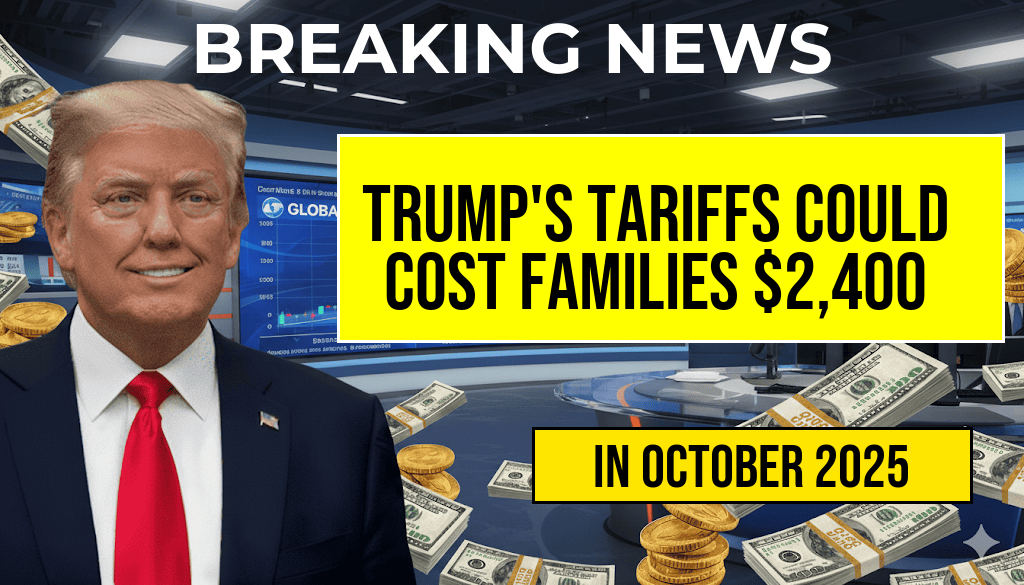The ongoing trade policies implemented during the Trump administration, particularly the tariffs on various imported goods, have sparked significant debate among economists and consumers alike. Recent analyses indicate that these tariffs, often referred to as the “Turbulence Tax,” could impose an annual financial burden of approximately $2,400 on American families. This increase in household expenses arises from higher prices on consumer goods, which are directly affected by the tariffs on imports from countries such as China and others. As families grapple with rising costs, understanding the implications of these tariffs becomes crucial for budgeting and future economic planning.
Understanding Tariffs and Their Impact
Tariffs are taxes imposed on imported goods, intended to protect domestic industries by making foreign products more expensive. The rationale behind these tariffs is to encourage consumers to buy American-made products. However, the unintended consequences often lead to increased prices for consumers on everyday items.
The Breakdown of Costs
A recent report by the Forbes highlights how the average American household could see an increase of about $2,400 annually due to these tariffs. Below is a breakdown of how these tariffs affect various sectors:
| Category | Estimated Price Increase |
|---|---|
| Electronics | $500 |
| Appliances | $300 |
| Clothing | $400 |
| Household Goods | $600 |
| Food Products | $600 |
Who Bears the Cost?
The burden of these tariffs largely falls on consumers rather than the companies that export goods. As businesses face higher costs due to tariffs, they often pass these expenses onto consumers. This can disproportionately affect lower- and middle-income families, who spend a larger portion of their income on essential goods.
Consumer Sentiment and Economic Outlook
Consumer sentiment is critical in assessing the long-term effects of tariffs. A recent survey conducted by the Washington Post indicates that many families are feeling the financial pinch. As prices rise, there is growing concern about the overall health of the economy and potential for a recession.
- Increased Prices: Everyday items are becoming more expensive, forcing families to reconsider their spending habits.
- Shift in Purchasing Behavior: Consumers may opt for cheaper alternatives or forego certain purchases altogether.
- Long-term Economic Effects: Sustained high tariffs could stifle economic growth and lead to job losses in sectors heavily reliant on imports.
The Political Landscape
The tariffs have also become a point of contention in political debates. Supporters argue that they will protect American jobs and industries, while critics assert that they harm the economy and disproportionately affect working-class families. As the Biden administration navigates these trade policies, the potential for changes remains a topic of discussion among lawmakers.
Conclusion
The financial implications of Trump’s tariffs are becoming increasingly clear, with an estimated annual cost of $2,400 for American families. As consumers face rising prices on essential goods, the debate surrounding these tariffs continues to evolve. Understanding the effects of the “Turbulence Tax” is essential for families as they plan their budgets and navigate the current economic landscape.
Frequently Asked Questions
What are Trump’s tariffs and how do they impact families?
Trump’s tariffs are taxes imposed on imported goods, which can lead to increased prices for consumers. As a result, families may face a higher cost of living, estimated at around $2,400 annually due to the so-called “Turbulence Tax.”
What is the “Turbulence Tax”?
The “Turbulence Tax” refers to the financial burden placed on American families as a consequence of tariffs. It encapsulates the overall increase in prices for goods that are affected by these tariffs.
Which products are most affected by the tariffs?
The tariffs primarily target a range of imported goods, including electronics, clothing, and furniture. These products often see significant price hikes that contribute to the overall cost increase for families.
How can families mitigate the impact of tariffs on their budgets?
Families can mitigate the impact by making informed purchasing decisions, such as seeking domestic alternatives to imported goods, shopping sales, and being mindful of price changes on affected products.
Are there any long-term economic effects of these tariffs?
Yes, in the long term, tariffs can lead to inflation, reduced consumer spending, and potential job losses in certain sectors. This creates a ripple effect that can further impact family budgets and the overall economy.

Leave a Reply